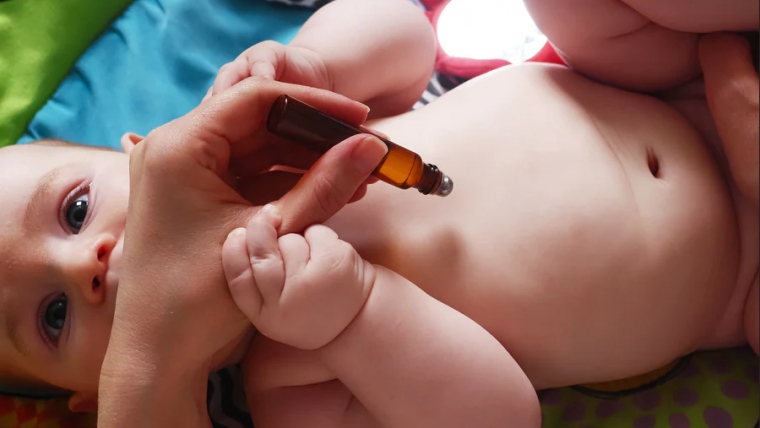Most people recognize diaper cream as a treatment for diaper rash. That makes sense, right? Well, not according to the world-renowned Mayo Clinic and the National Library of Medicine. Apparently, there is a new normal when it comes to the prevention of diaper rash.
Diaper dermatitis (diaper rash) is an inflammatory reaction of the skin around the diaper area. It can be the result of a combination of multiple factors including increased moisture, prolonged contact with urine or feces, and other irritants like detergents.
The condition occurs in about 50% of infants, and it accounts for about 25% of visits to primary care physicians related to dermatologic complaints in the first year of life. Newborns and infants are at an increased risk due to skin immaturity with peak incidence at around 9 to 12 months of age.
Normal signs and symptoms of diaper dermatitis include:
- Inflamed skin in the diaper area — buttocks, thighs, and genitals
- Itchy, tender skin in the diaper area
- Sores in the diaper area
- Discomfort, fussiness, or crying, especially during diaper changes
The cause of diaper dermatitis includes the following:
- Leaving wet or soiled diapers on the baby for too long. The tender skin of babies can develop a rash if wet or soiled diapers are left on too long. Babies may be more prone to diaper rash if they’re experiencing frequent bowel movements or diarrhea.
- Chafing or rubbing. Tight-fitting diapers or clothing that rubs against the skin can lead to a rash.
- Using a new product. Your baby’s skin may react to a new brand of baby wipes, diapers, or a detergent, bleach, or fabric softener used to launder cloth diapers. Ingredients in lotions, powders, and oils might add to the problem.
- Developing a bacterial or yeast (fungal) infection. What begins as a simple infection may spread to the surrounding skin. The area covered by a diaper is at risk because it’s warm and moist, making a perfect breeding ground for bacteria and yeast. These rashes can be found within the creases of the skin. And you might notice red dots scattered around the creases.
- Introducing new foods. As babies start to eat solid foods, the content of their stool changes. This increases the likelihood of diaper rash. Changes in your baby’s diet can also increase the frequency of stools, which can lead to diaper rash. Breastfed babies might develop diaper rash in response to something the mother has eaten.
- Having sensitive skin. Babies with skin conditions, such as atopic dermatitis (eczema) or seborrheic dermatitis, may be more likely to develop diaper rash. The irritated skin of atopic dermatitis is usually in areas not covered by a diaper.
- Using antibiotics. Antibiotics can contribute to a rash by killing bacteria that keep yeast growth in check. Antibiotic use also increases the risk of diarrhea. Breastfed babies whose mothers take antibiotics are also at increased risk of diaper rash.
Management of diaper dermatitis has two main goals: healing of damaged skin and prevention of rash recurrence.
To achieve these two goals, the Mayo Clinic advises the following:
- Change diapers often. Remove wet or dirty diapers promptly. If your child is in childcare, ask staff members to do the same. Disposable diapers that contain an absorbent gel are effective because they draw wetness away from the skin.
- Rinse your baby’s bottom with warm water as part of each diaper change. You can use a sink, tub, or water bottle for this purpose. Moist washcloths, cotton balls, and baby wipes can aid in cleaning the skin. Be gentle. Use wipes that don’t contain alcohol or fragrance. Or use a mild soap or a gentle no-soap cleanser.
- Gently pat the skin dry with a clean towel or let it air dry. Don’t scrub your baby’s bottom. Don’t use talcum powder.
- Apply cream, paste, or ointment at every diaper change. Applying topical emollients is recommended for both prevention and treatment. For the management of current diaper dermatitis, apply with each diaper change. Examples of emollients available include zinc oxide, petrolatum, cod liver oil, and lanolin, among others.
- After changing diapers, wash your hands well. Handwashing can prevent the spread of bacteria or yeast to other parts of your baby’s body, to you, or to other children.
- Fasten diapers securely but not too tight. A diaper that allows some airflow helps prevent diaper rashes. Too-tight diapers can rub the skin. Take a break from plastic or tight-fitting diaper covers.
- Give your baby’s bottom more time without a diaper. When possible, let your baby go without a diaper. Exposing skin to air is a natural and gentle way to let it dry. To avoid messy accidents, try laying your bare-bottomed baby on a large towel and engage in some playtime.
The Mayo Clinic and The National Library of Medicine believe parents are denying their children the benefit of prevention if parents are not applying diaper cream at every diaper change.
The two organizations advocate for many preventive actions including the use of zinc oxide-based diaper creams as a preventive treatment to improve the skin barrier function and provide a barrier between the skin and the diaper, urine, and feces, by not only limiting contact with the skin and diminishing irritation but also preventing over-hydration to the skin.
Most over-the-counter diaper rash cream formulas include zinc oxide as an active ingredient. So that’s not an issue. The problem is us. The parents who hate to get diaper cream all over their hands and under their nails.
While zinc oxide is an incredible barrier to protect babies, it is also frustrating to get the stuff off our hands and out from under our nails.
In reviewing the best options for the regular application of diaper cream I came across a new product called Little Bubs. This seems to be the only one-handed Diaper Brush and Cream system on the market. It provides a hygienic mess-free solution to applying diaper cream at every changing time. No more excuses.
In extreme cases of bacterial infection, topical antibiotics may be necessary. And in cases of severe infections, such as perianal streptococcal dermatitis, oral antibiotics are indicated. Management of diaper dermatitis does not necessitate the involvement of an interprofessional team to achieve appropriate treatment; however, as some cases can be more challenging, it is important to obtain timely consults whenever the need arises.


